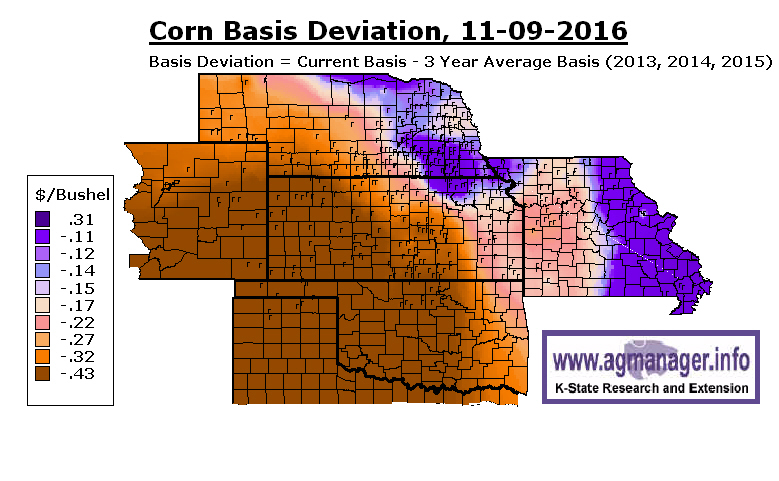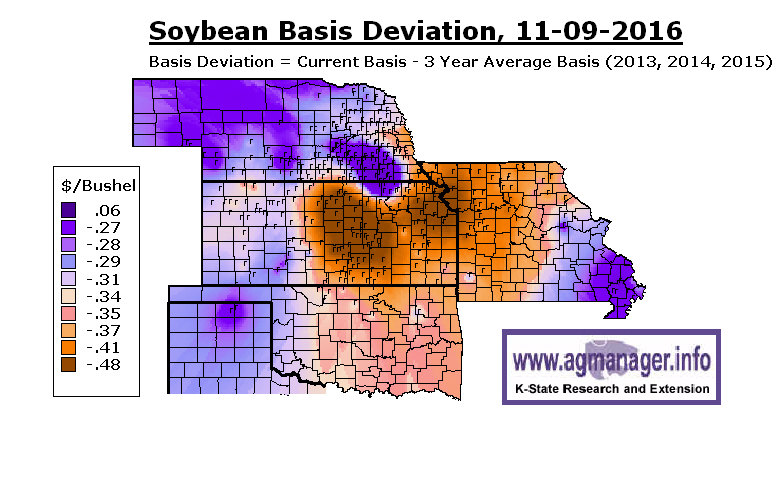USDA reports wheat planting at 94 percent complete in the 18 states it tracks, just one point behind the five-year average. Top state Kansas is 97 percent finished, two points behind average.
At 84 percent emerged, the 18 states are right on average, while Kansas is 2 points behind. USDA rates 59 percent of the crop good/excellent, up from 52 percent this week last year. Only 9 percent is rated poor/very poor, one point less than last year.
Kansas is 56 percent good/excellent and 10 percent poor/very poor. This is quite a bit better than last year at this early stage, when 46 percent was in the top end and 12 percent in the bottom categories.
Soybeans Hit 97 and Corn 93 Percent Harvested
This week’s Crop Progress report from USDA indicates all that remains to be harvested are acres here and there. Soybeans have reached 97 percent in the 18 states – two points ahead of average. North Carolina is the laggard at only 62 percent - but its average for this time is 44 percent. Kansas bean harvest stands at 94 percent, two points ahead of average
Likewise, the 18-state corn harvest is 93 percent complete, one point ahead of average, and Kansas is 99 percent finished, two points ahead of average.
Corn and soybean basis are quite weak in the state, as the charts below indicate, supporting the reports we are hearing that buyers are full-up and grain piles are not uncommon this fall. The corn futures market is offering 8 cents carry to March and about 16 cents out to May. Soybean carry is 15 cents to January, 23 cents to March, and 30 cents to May.


Excluding drying since that decision already has been made, Iowa state University’s storage cost calculator (http://www.extension.iastate.edu/agdm/decisionaidscd.html#outlook) estimates the cost of storing corn until March at 22 cents and soybeans at 38 cents. These are greater than the price improvement the futures market is projecting at this time.
Wheat and grain sorghum basis also are worse than usual.
It’s the hope of basis improvement that has many farmers storing both corn and beans this year. Given the seasonal tendency to improve after harvest and the fact that USDA’s monthly supply/demand reports have been raising usage regularly, hopefully demand will run through the piles and allow basis to improve quickly.

